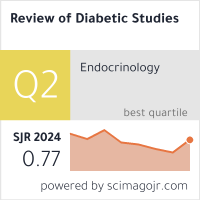Application Of Ultrasound As A Pre-Treatment ForThe Germination Of Cañihua (ChenopodiumPallidicaule) Illpa Inia 406 And Cupi Variety And ItsEffects On The Properties Of Bioactive And NutritionalCompounds
DOI:
https://doi.org/10.1900/wzc53325Keywords:
Cañihua; germination; ultrasound; nutritional properties; bioactive propertiesAbstract
The objective of this study was to apply ultrasound as a pretreatment in the germination of cañihua (Chenopodium pallidicaule) of the ILLPA, INIA 406, and CUPI varieties to evaluate its effects on bioactive and nutritional compounds. The following parameters were used: 40 kHz, intensity of 0.11 W/cm², ambient °T for 10 and 20 min, with an initial conditioning of 14 h/20°C, and germination at 72 h/20°C. The cañihua was then processed to obtain flour. Consequently, in the ILLPA variety, treatment with 20 minutes of ultrasound (US) increased the concentration of proteins 21.1% on a dry basis (BS), 0.083 g/Kg (BS) of iron, 35.7 mmol/ml TROLOX of antioxidant capacity, and reduced carbohydrates with 74.Conversely, the CUPI variety exhibited an augmented ash content of 3.97% (BS) and 0.004 g/100g BS of polyphenols, along with a 0.711% (BS) increase in fat, following a 20-minute US treatment. Statistical analyses revealed substantial disparities in the treatments of proteins, iron, polyphenols, carbohydrates, and antioxidant capacity for both varieties, as well as in ash for CUPI. Conversely, no substantial disparities were observed in ash and fat for ILLPA, and only in fats for CUPI. The present study demonstrates the potential for the application of ultrasound to sprouted foods other than those previously examined, with the objective of enhancing their nutritional and bioactive profiles.
Downloads
Published
Issue
Section
License
Copyright (c) 2025 Brigitte Condori, Vianka Zapana, Erika Pachari, Iván Jachmanián

This work is licensed under a Creative Commons Attribution-ShareAlike 4.0 International License.


